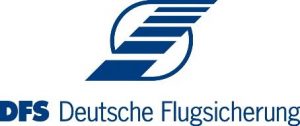Droniq and DFS develop Germany’s first drone traffic system
U-Space is being tested at the Port of Hamburg, providing the basis for expanding commercial drone use.
In future, drones will have their own traffic system. This system, in essence a network of services and procedures, will allow flights in areas with a high volume of drones to be carried out easily, safely, efficiently and in coordination with manned air traffic. This is the idea behind U-Space – a concept of EASA, the European Union Aviation Safety Agency. EU member states have to implement U-Space by the beginning of 2023. Droniq GmbH, Germany’s leading company for the integration of drones into airspace, and its parent company DFS, the German air navigation service provider, are putting the idea into practice for the first time – from conception to commissioning. To this end, they are setting up a U-Space Sandbox in the Port of Hamburg, Germany’s largest seaport by volume. The project has a volume of approximately one million euro and is being funded partly by the German Federal Ministry of Transport and Digital Infrastructure (BMVI). By doing so, the BMVI is setting the foundations for the implementation of further U-Spaces in Germany and promoting the further development of the local drone market.
Drones are increasingly being used commercially, from inspecting construction sites to surveying posssible routes for piplines and roads. Drone flights will need to be easy to conduct and feasible at short notice. The reality is different, however, and drone flights are not always feasible, especially in areas with a high volume of drones. This is due to lengthy flight approval processes.
U-Space, a spatially delimited airspace element, is intended to solve these challenges. In U-Space, special rules and procedures coordinate drone traffic. Drone flights can be carried out quickly, safely and without a long approval process – even beyond the pilot’s line of sight.
“In the future, U-Space will also allow the full potential of drones to be exploited in urban areas within an established framework,” says Droniq CEO Jan-Eric Putze. “For unmanned aerial transport, this is a milestone. We are proud to show for the first time what this future can look like.”
Distribution of tasks and roles
The basis for U-Space is formed by requirements laid down by EASA. These partly determine its technical and procedural design. They also define the necessary actors and tasks for its organisation.
Drone traffic in U-Space is coordinated by a U-Space Service Provider (USSP). This is the contact person for drone pilots. This task is taken on by Droniq as part of the U-Space Sandbox. It issues flight permits for the drone missions and informs pilots about the current manned and unmanned air traffic as well as any airspace restrictions. To do this, Droniq uses the first fully operational traffic management system for drones (UTM) in Germany, which it distributes and which was developed by DFS.
The second central role is fulfilled by DFS. As the Single Common Information Service Provider (SCISP), it supplies Droniq with all relevant airspace and air traffic data for the provision of U-Space services. Furthermore, with the manned aviation data, all air traffic, manned and unmanned, can be displayed in a combined air situation picture. This is an essential prerequisite for flights beyond the visual range of pilots – and thus for the efficient use of drones.
“Our drone traffic systems puts us in an excellent position internationally, providing a solid foundation for the integration of drone airspace. In this way, we are enabling fast and uncomplicated drone operations. This is an important step towards digital aviation, combined with a proven safety standard,” explains Friedrich-Wilhelm Menge, Managing Director Technology at DFS.
U-Space during the Flight Weeks
In the fourth quarter, Droniq and DFS will demonstrate how a U-Space can function during the Flight Weeks.
Prior to this, the conception, development and internal testing of the U-Space Sandbox will take place. The implementation of the U-Space Sandbox is being carried out with several project partners. These include the Hamburg Port Authority (HPA), HHLA Sky GmbH, the Hamburg Ministry of Economics and Innovation, Hamburg Aviation and the project consortium UDVeo.
Hamburg’s Senator for Economics and Innovation Michael Westhagemann: “The Port of Hamburg offers the best environment to test a traffic system for drones and evaluate the opportunities and challenges. Used wisely, drones offer enormous potential in a host of areas of business and society. As I see it, the U-Space Sandbox means we can test the potential offered by a new kind of air transport under real conditions and actively shape its development. That is why I am delighted about the decision of the Federal Ministry of Transport to support the project in Hamburg.”
Federal Minister Andreas Scheuer: “The future of drones in Germany will be innovative, intelligent and interlinked. We are about to launch Germany’s first drone airspace test bed in Hamburg, laying the groundwork for the transport system of tomorrow. In the U-space Sandbox, we will be putting drones to the test in practical application to find smart ways to safely integrate drones and, in the future air taxis, into our airspace. Drones are a clean, fast and smart mobility solution, especially in the logistics sector, for supporting emergency services or delivering supplies to rural areas. The U-space Sandbox will enable us to grow German-engineered drone innovations from their niche market and help them take to the skies.”
